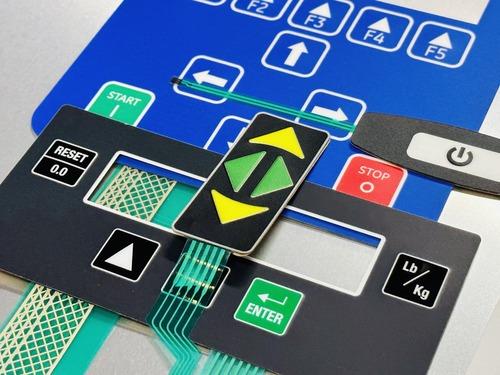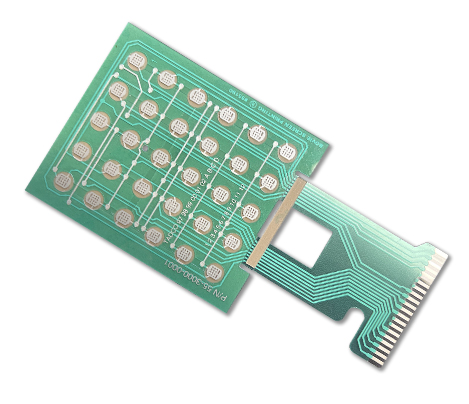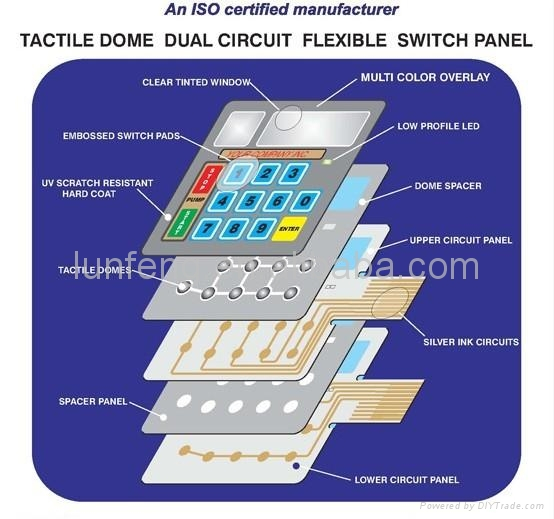Understanding the Technology Behind Membrane Switches
Understanding the Technology Behind Membrane Switches
Blog Article
Understanding the Importance of Membrane Switches in Individual Interfaces
Membrane switches are essential parts in the design of effective individual interfaces, promoting not only performance however additionally enhancing aesthetic charm and individual communication. As we explore the various advantages and future fads connected with Membrane innovation, it comes to be clear that these buttons are more than simply components; they stand for a convergence of advancement and practicality.
What Are Membrane Buttons?

The spacer layer, which has sticky buildings, enables the splitting up of the circuit layer from the overlay, making sure that the switch remains in a non-activated state until pushed. When stress is applied to the overlay, it compresses the spacer layer, connecting the void and finishing the circuit in the underlying layer. This style not only reduces the physical room needed for traditional mechanical buttons however also enhances the sturdiness of the gadget, as Membrane buttons are typically resistant to dirt, wetness, and other ecological elements.
Commonly located in applications varying from consumer electronic devices to medical devices, Membrane switches are indispensable to contemporary technology, supplying a effective and straightforward user interface that aligns with modern design needs.
Advantages of Membrane Switches
While many switch innovations exist, Membrane Switches deal distinct benefits that make them particularly desirable in numerous applications. One of the key benefits of Membrane buttons is their compact style, which allows for space-saving applications in tools where property is restricted. Their slim profile not just boosts aesthetic charm but likewise promotes lightweight building.
An additional significant benefit is their resistance to ecological factors. Membrane buttons are generally sealed versus moisture, dust, and pollutants, making them ideal for use sought after settings, such as clinical devices and commercial equipment. This toughness prolongs the lifespan of the button, decreasing upkeep prices and enhancing reliability.
Furthermore, Membrane buttons can be personalized to fulfill details design requirements, incorporating distinct graphics and colors that improve customer communication. Their responsive responses alternatives can additionally be customized to give a satisfying user experience. Additionally, Membrane buttons are cost-efficient, specifically in high-volume applications, as they can be generated successfully.
Applications in Numerous Industries

In the customer electronic devices sector, Membrane switches prevail in tools such as microwaves, washing makers, and push-button controls. Their tactile responses and aesthetic alternatives improve user experience while giving a smooth, contemporary have a peek at these guys look. Additionally, vehicle makers use Membrane switches in control panel controls and infotainment systems, where room is limited, and customer interaction is critical.
Additionally, the industrial market leverages Membrane switches in control panels for machinery and devices, allowing for user-friendly procedure in typically harsh atmospheres. Their resistance to chemicals and moisture guarantees long life and reliability in these applications. On the whole, the adaptability of Membrane Switches adds considerably to their extensive usage, making them important in numerous technological domains.
Layout Considerations for Membrane Buttons

When designing Membrane switches, a number of crucial factors to consider must be taken into account to make sure optimum capability and user experience. Firstly, the option of materials is important; choosing long lasting, high-quality substrates can enhance the switch's longevity and resistance to ecological factors such as moisture and temperature fluctuations.
Secondly, the design of the graphic overlay should prioritize clarity and convenience YOURURL.com of use. Symbols and message have to be readable, and the format ought to help with intuitive communication (membrane switches). Furthermore, responsive responses is essential; including a responsive dome or other systems can boost the customer experience by supplying physical confirmation of activation
Another important variable is the button's electrical efficiency. Developers should ensure that the conductive traces are effectively created to reduce resistance and prevent signal interference. This involves analyzing the needed actuation force and making certain compatibility with the electronic parts they will certainly interface with.

Future Trends in Membrane Technology
As technology proceeds to advancement, Membrane switches are poised to advance substantially, driven by innovations in materials and making techniques. One arising fad is the consolidation of innovative materials, such as adaptable substrates and conductive inks, which enhance durability and decrease the total weight of Membrane switches. These materials not just boost the tactile action but likewise permit for the design of switches that can hold up against harsher environmental conditions.
Moreover, the assimilation of touch-sensitive technologies is transforming standard Membrane Switches right into more interactive individual interfaces. Capacitive touch sensing units a fantastic read embedded within Membrane switch panels can supply an extra intuitive and responsive individual experience, straightening with the expanding need for streamlined, modern designs in consumer electronic devices.
In addition, advancements in printing techniques, such as electronic and 3D printing, make it possible for rapid prototyping and customization of Membrane switches. This flexibility allows producers to respond faster to market demands and consumer preferences.
Last but not least, sustainability is becoming a considerable emphasis, with makers checking out green products and procedures. As these patterns unfold, the future of Membrane technology promises boosted performance, aesthetic appeal, and environmental responsibility, strengthening their duty in sophisticated interface across various sectors.
Verdict
Finally, Membrane Switches stand for an essential part in the style of individual interfaces, combining functionality with visual versatility. Their advantages, consisting of longevity and resistance to ecological elements, make them suitable for varied applications across various sectors. Thoughtful style considerations boost individual interaction and experience. As improvements in innovation proceed, the development of Membrane buttons is expected to more refine interface, driving development and improving functionality in an increasingly intricate technological landscape.
Membrane buttons are integral elements in the design of efficient customer interfaces, facilitating not only performance however also enhancing visual charm and customer interaction.Membrane Switches offer as a vital element in different customer interfaces, facilitating a seamless interaction in between customers and digital devices.While numerous button technologies exist, Membrane Switches offer unique benefits that make them specifically preferable in numerous applications.Moreover, Membrane switches can be personalized to satisfy certain layout demands, including unique graphics and colors that enhance user interaction.In final thought, Membrane Switches represent a vital component in the design of user interfaces, combining functionality with aesthetic flexibility.
Report this page